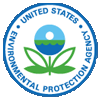
With Summer’s Arrival, Reminder About Woonasquatucket River "Do's and Don'ts" and Update on EPA Efforts
As summer tempts Rhode Island-area youth to find a place to swim, EPA reminds the public to use the Woonasquatucket River responsibly. Specifically, residents of North Providence, Johnston, and Providence should keep in mind that contamination in and along the river may pose a health risk.
EPA asks that people keep in mind the following Do's & Don'ts for the Woonasquatucket River:
- Don't eat fish, turtles, eels, other wildlife or plants from the
Woonasquatucket River;
- Don't wade in the shallow water or swim in the river;
- Don't dig into the river banks; and,
- Do obey the warning signs posted along the river.
With summer weather in full force, the Woonasquatucket River is an appealing spot for children. While EPA continues to make progress in cleaning up dioxin contaminated areas, parents, teachers, and camp counselors should remain vigilant to ensure that children are protected from dioxin and other contaminants remaining in the water, sediment and soil. Walking, running, or bike riding along the river, and paddling a canoe or kayak on the river are ways to safely enjoy the river. However, people should wash thoroughly after any contact with the river water, sediment or soil.
Work is progressing on the Centredale Manor Restoration Project Superfund Site. This summer EPA and its contractors will be doing environmental investigations throughout the ‘Oxbow,’ which is a large wetland area between North Providence and Johnston. This additional sampling will help inform any future work happening in the area. EPA will also be putting up some additional fencing along the River where trespassing is occurring. This is an effort meant to help reduce the potential for exposure to potential contamination along the river banks.
More information on the Woonasquatucket River and Centredale Manor cleanup http://www.epa.gov/region1/superfund/sites/centredale
# # #
